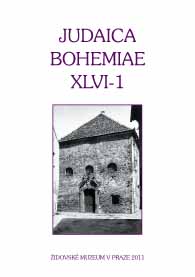
Book Review
Book Review
Michael Laurence Miller, Rabbis and Revolution. The Jews of Moravia in the Age of Emancipation, Stanford, California: Stanford University Press, 2011. 464pp. ISBN: 978-0-8047-7056-9
More...
Michael Laurence Miller, Rabbis and Revolution. The Jews of Moravia in the Age of Emancipation, Stanford, California: Stanford University Press, 2011. 464pp. ISBN: 978-0-8047-7056-9
More...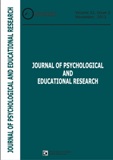
Keywords: inmates; forensic psychology; attitudes; delinquency
None of the studies pertaining to what role education plays in shaping the attitudes toward inmates specifically addressed the differences between psychology and law as a fields of study with different philosophies. The purpose of this study was to examine the role of students’ background and field of study on their attitudes toward prisoners. The participants filled in a questionnaire regarding their perception of inmates. The results suggest that psychology students have more tolerant attitudes towards prisoners than geography and law students. We found no differences between freshmen and seniors. We discussed the results in terms of a possible self-selection effect when choosing one’s field of study but also in terms of different philosophies that are specific to psychology and law.
More...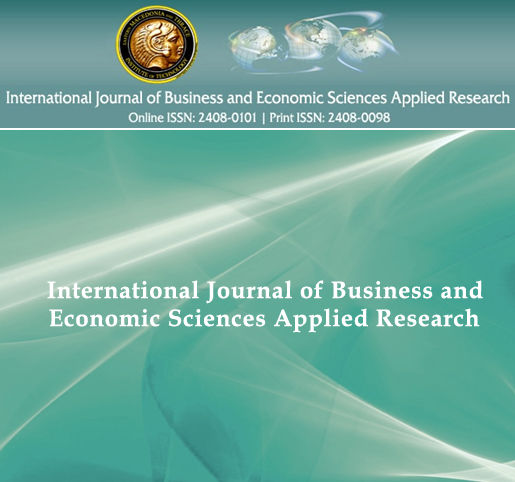
Keywords: Regional development; clusters; cluster policies
Purpose – This papers aims to analyze the dynamics of agglomeration processes in the North East region of Romania and to connect the results with the process of deepening of Romania’s European integration.Design/methodology/approach - The research method includes an analysis in dynamic of two economic sectors: agriculture and IT&C. Firstly, I analyzed the transformation of the GDP from 2000 to 2011 so as to gain insights from the evolution of the North East region during the EU accession and economic crisis. Secondly, I used the Location Quotient method in order to assess the agriculture and IT&C sectors in the North East in comparison with the other regions of Romania. Findings – The results show a strong specialization degree in agriculture, where the North East regions has the higher value of the Location Quotient in comparison with the other regions, and a weak specialization in IT&C, where the region ranked 5 from 7 in 2011. At the same time, regarding the IT&C we can see a positive tendency during the years, possibly explained by the presence of one of the most important university centers from the country and by the multinationals that have started to come after the EU accession. The over-representation of the agriculture in the regional economic structure is not specific for the North East region; other four Romanian regions had in 2011 a strong relative specialization in this field. Research limitations/implications – The analysis can be completed using more quantitative indicators like the export value of the sector as compared to total regional export value. The limitation is that in Romania there are no data on exports at the regional level. Originality/value – This analysis uses Location Quotient method in order to compare the levels of specialization across the Romanian regions.
More...This rejoinder to Raclavský (2008) should be read in conjunction with the criticisms in Taliga (2008) and Miller (2008) of Raclavský’s (2007) defence of Tichý’s theory of verisimilitude. 1 The theory of partial ordering can be axiomatized with strict inequality < as a primitive term and asymmetry and transitivity as special axioms. It can be axiomatized also with weak inequality as a primitive term and reflexivity, antisymmetry, and transitivity as special axioms. It is common knowledge that these two axiomatizations are interchangeable, and that nothing of the least importance hangs on which of the relational predicates < and is taken as primitive.
More...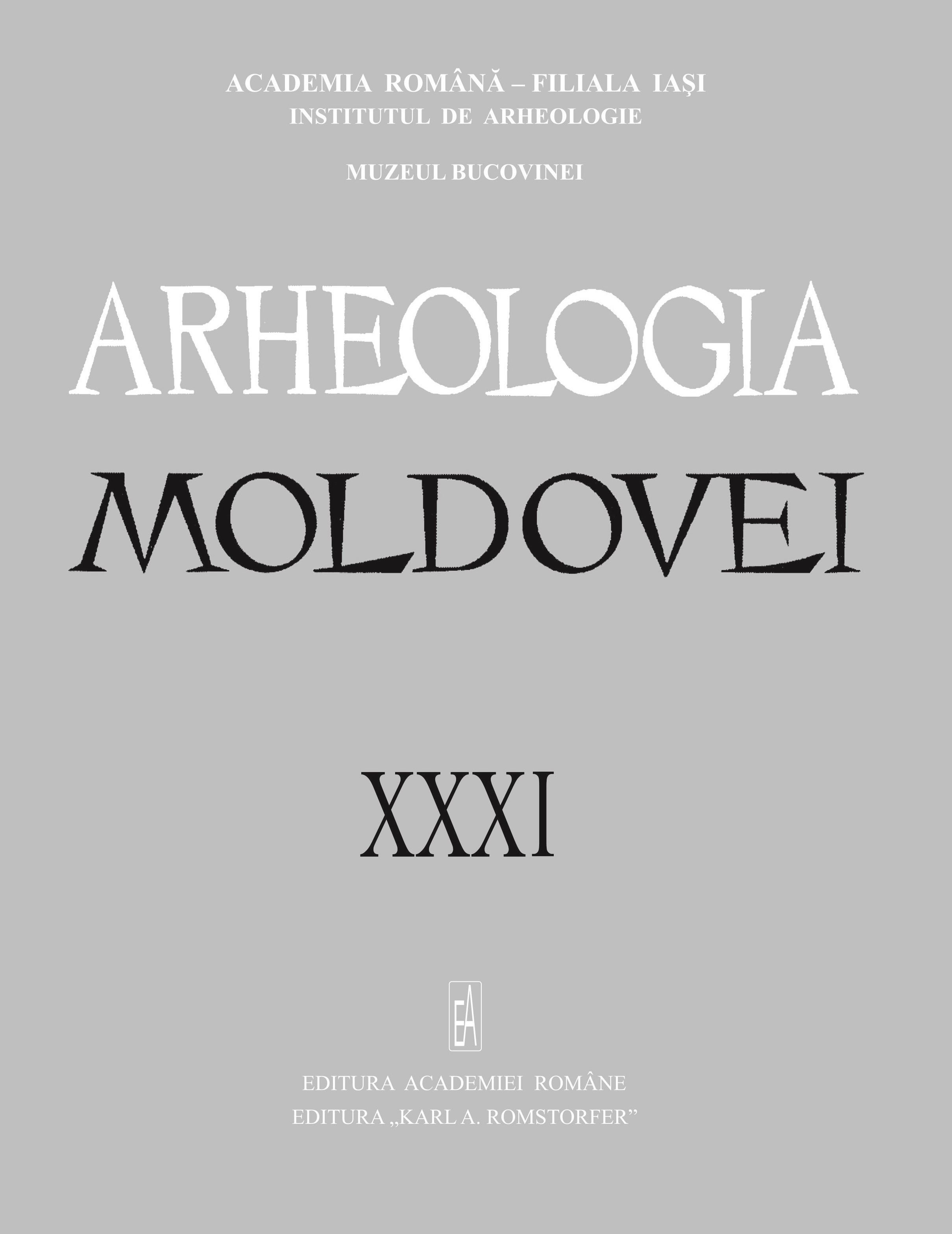
Keywords: village Fruntiseni (Vaslui County, Romania); Neo-Eneolithic culture; Stoicani-Aldeni culture; ceramics; tools; weapons; clay statuette;
Au mois novembre de l’année 2006, nous avons organisé trois recherches de surface au point appelé „Pârlitura”, situé à la proximité du village Fruntişeni (département de Vaslui). Dans ce point nous avons identifié une grande agglomération, située d’un côté et d’autre d’un petit lit de rivière traversé par plusieurs cours d’eau. Le fait que sur le côté gauche il y avait une forêt et que les traces archéologiques étaient assez rares, nous a déterminé à mener les recherches sur le côté droit, où il y avait une surface agricole privée, exposée à l’érosion, et d’où nous avons ramassé un riche matériel archéologique qui appartenait à la population néo-énéolithique au facies culturel Stoicani-Aldeni. Le matériel archéologique découvert dans cette agglomération comprend: de nombreux fragments céramiques, outils et armes, moulines (à bras) et statuettes en argile. L’agglomération néolithique d’aspect Stoicani-Aldeni de Fruntişeni se joint aux autres vingt-deux publiées dans le Le Répertoire archéologique du département de Vaslui.
More...Keywords: Compensation; Benefits; Total reward; Romanian companies; Preferences;
It has become evident that organizational rewards attract human resources, motivate and maintain them into companies. There is no perfect combination of rewards into an attractive salary package, as they are perceived differently by the employees of each company. Moreover, there are differences in preferences and among employees of the same company. This attraction for a reward or another depends on: the proffesional experience, the organizational culture, the individual values, etc. Of course, the specificity of business also influences the rewards in one way or another. The purpose of this paper is to design a research proposal through which we are able to analyze the preferences for organizational rewards of the employees from the Romanian companies. Suggestions for practitioners and some preliminary results and recommendations for further research are provided.
More...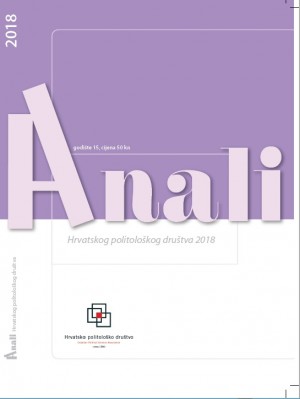
Keywords: democracy; liberalism; riddle; genealogy; populism; public opinion;
This critical essay deals with the book Can Democracy Work? by James Miller, which, warning of the problems of democratic politics, retains democratic faith. By combining political science and historiography, and intertwining the history of ideas with political biography in portraying different episodes in the history of democracy, the book seeks to give insight into the riddle of democracy. This riddle is exhibited in various theoretical and practical tensions: between the Rousseauian demand for sovereignty of the people and the general will on the one hand, and the Platonistic epistemic skepticism about the ability of the people to decide and the political demands of liberalism on the other; between the need to control the rulers and the political-economic dynamics of corruption and clientelism incited by democratic politics; between rebellion against the elites as a species of functional political hygiene in a polity, and uncertainty of outcomes brought by the inherent instability of democracy and its aptitude to excess; and between the seeming inevitability of elections and their cooptational trap. Between the liberalism of fear a la Judith Shklar and the thrills of populism a la Chantal Mouffe, the author retains democratic faith – a political version of Kierkegaardian existentialism which goes beyond the undecided, forever doubting reflection and a political good that is shared with others, in spite of the uncertainties of public opinion and the ascertained questionability of civic virtue in the open field of the political in history.
More...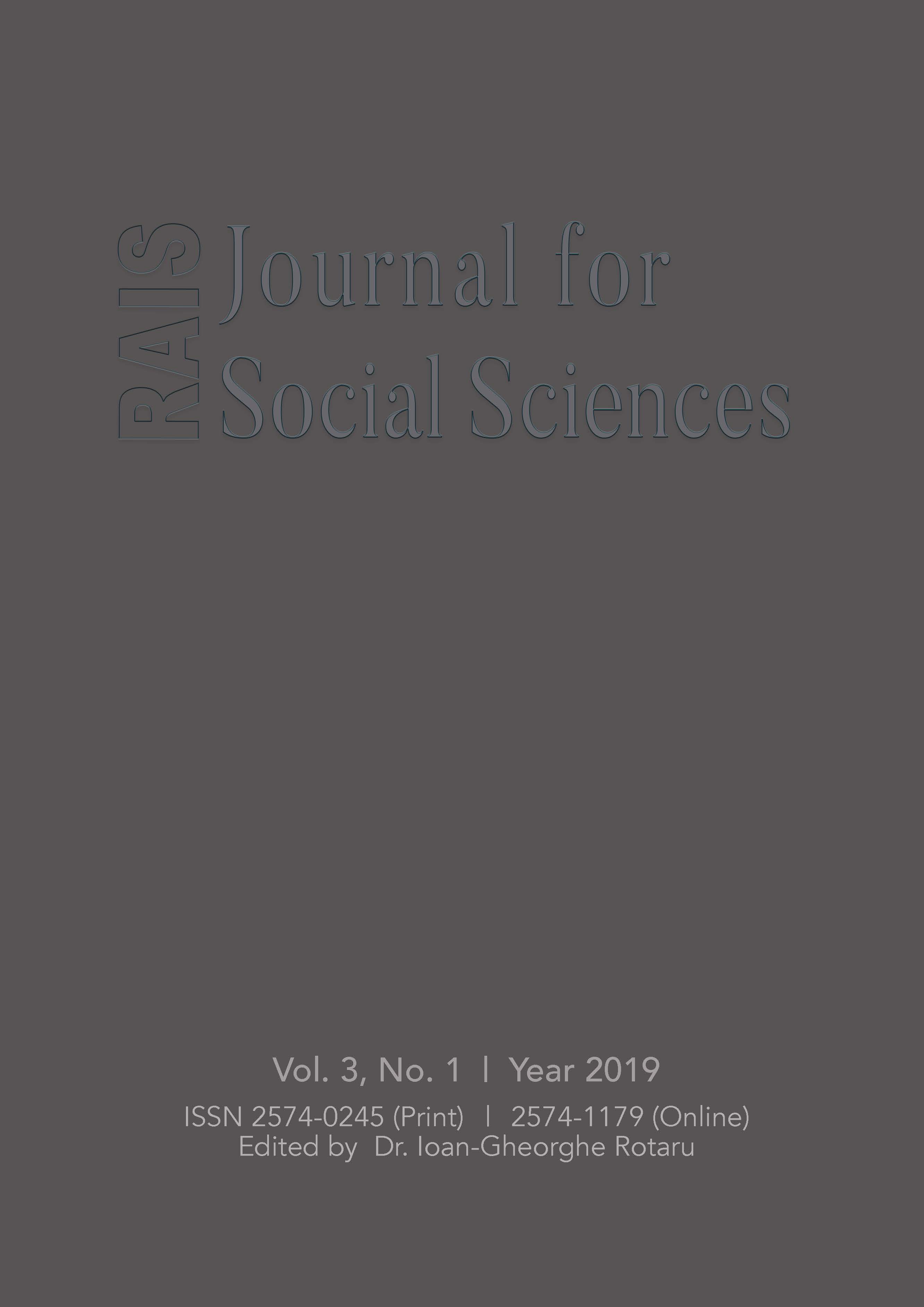
Keywords: church; postmodernism; culture, society; community;
The church was placed by God at the confluence between men and God to promote the interests of Heaven in favor of the earthlings. As these two elements, which are defining for the human existence, are becoming more and more estranged from each other, as a result of the influence of current human ideologies, the Church is becoming increasingly limited in options and is forced to choose between cultural accommodation and spiritual revolution. For the same reasons, the Church has also been deprived of the image potential it used to enjoy, as its means of expression have been limited. The aim of this article is to prove that the audience to whom the Church is addressed, which is overwhelmingly influenced by postmodernism in its various forms of manifestation, might have the opportunity to opt again for different divine approaches to life. This might happen only to the extent to which the Church is willing to assume a brave and responsible role on the ideology market, while also providing a life model promoted by the genuine Christian lives of its members. Despite all the challenges posed by Christianity, Postmodernism can give the Church the opportunity to be revived.
More...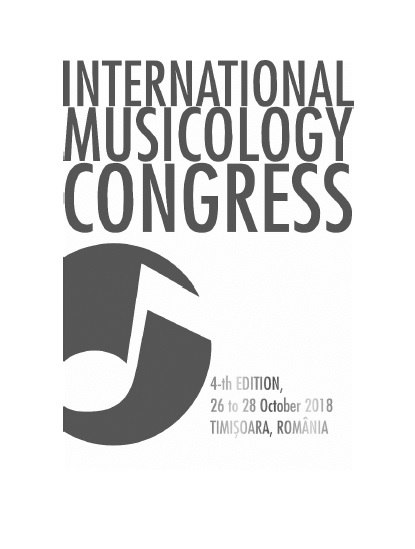
Keywords: Muzică instrumentală, Corn; Muzică de Cameră; Republica Moldova; Compozitori din Republica Moldova
De-a lungul anilor, în componistica națională, se atestă tot mai mult interesul compozitorilor din Republica Moldova pentru corn, importanța acestuia amplificându-se considerabil. Acesta se face tot mai des auzit, atât în componența orchestrei simfonice, precum și în cadrul unor ansambluri camerale și chiar lucrări solistice cu acompaniament. Calitățile timbrale ale cornului, apropiate buciumului, le-a dat compozitorilor posibilitatea să-și exprime ideile de inspirație folclorică și să-l descopere dintr-o altă perspectivă de îmbinare a moştenirii clasice cu paleta timbrală a folclorului românesc. Spre deosebire de repertoriul naţional orchestral, unde cornul este utilizat destul de frecvent, în muzica de cameră, lista creaţiilor destinate acestui instrument nu este foarte amplă. Totodată, în acest segment al muzicii naţionale de cameră se observă o tratare destul de variată a cornului. Unicitatea timbrală a acestuia se regăseşte în creaţiile camerale semnate pentru componențe diferite, cum ar fi duete, triouri, cvintete de lemn, cvintete de alamă, sextete și alte componențe mai mari.
More...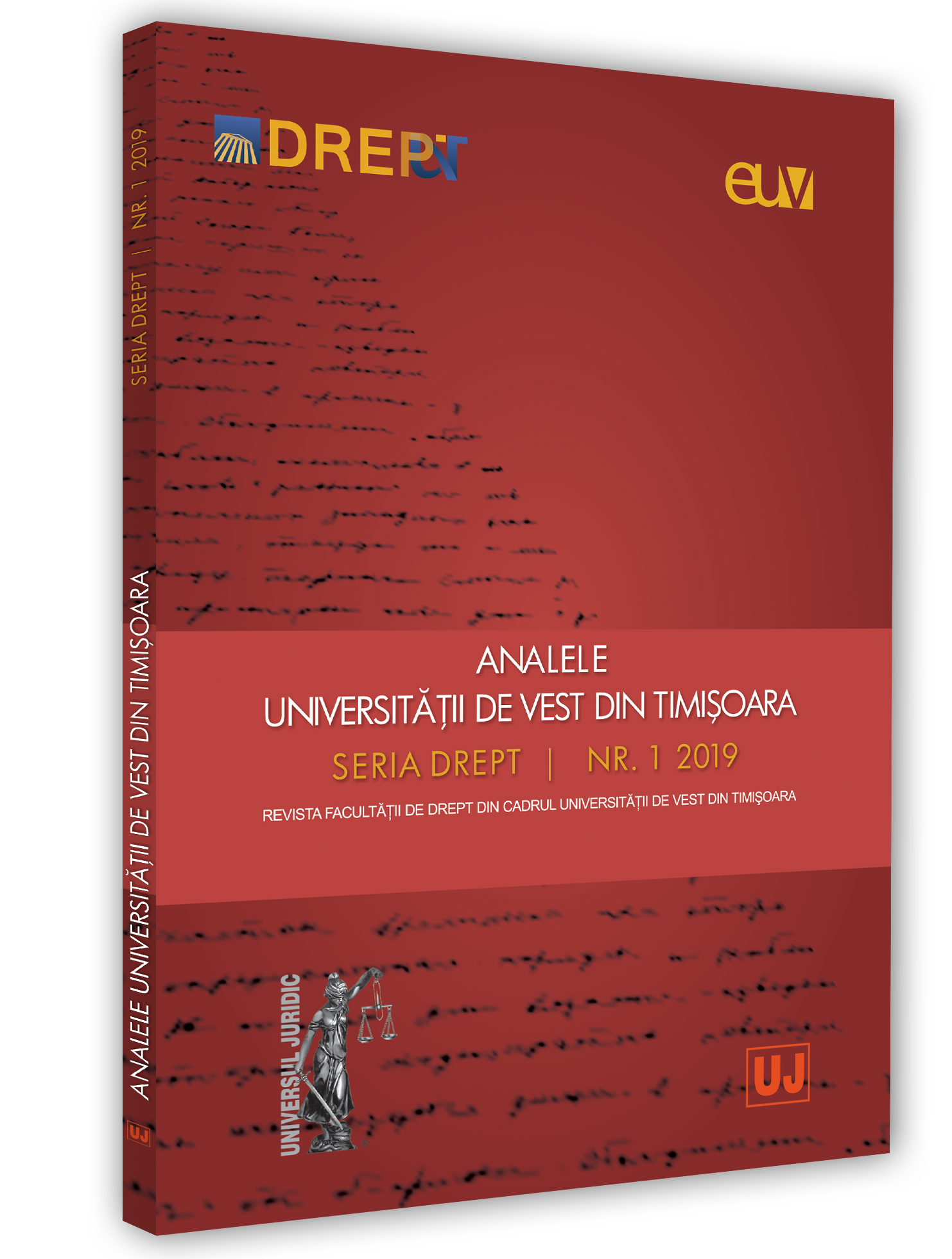
Keywords: assistance; representation; lawyer; representative; client interests; judicial proceedings; notarial procedure;
The present study analyzes several elements of the offense of disloyal assistance and representation, which covered an unregulated area at the level of criminal protection, required, in the context in which, in particular, the lawyer, who is an "indispensable partner of justice", has a criminal protection against the crime of judicial outrage, but he was not criminally liable for malpractice in the exercise of his profession in relation to his client.
More...
Keywords: freedom; ontological; psychological; conscience; responsabile; individual;
The basis of Sartrean freedom is ontological: we are free because we are not a self (an in-itself ) but a presence-to-self (the transcendence or “nihilation” of our self ). This implies that we are “other” to our selves, that whatever we are or whatever others may ascribe to us, we are “in the manner of not being it,” that is, in the manner of being able to assume a perspective in its regard. This inner distance reflects not only the nonself-identity of the for-itself and the ekstatic temporality that it generates but forms the site of what Sartre calls “freedom as the definition of man.” To that freedom corresponds a coextensive responsibility. We are responsible for our “world” as the horizon of meaning in which we operate and thus for everything in it insofar as their meaning and value are assigned by virtue of our life-orienting fundamental “choice.” At this point the ontological and the psychological overlap while remaining distinct as occurs so often in phenomenology.
More...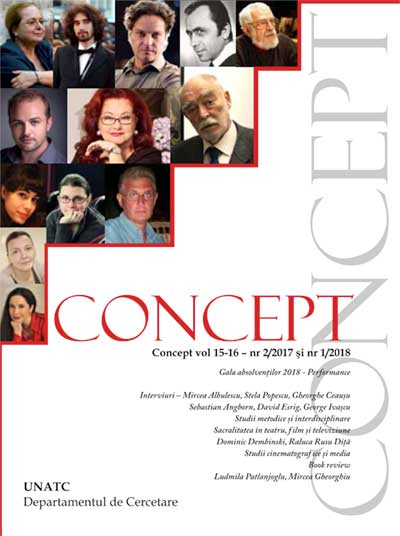
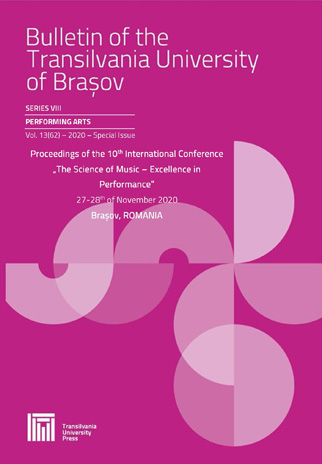
Keywords: double bass; double bass concerto; double bass history; double bass players; double bass repertoire; composers of double bass concertos;
The choice of the following subject is conditioned by the artistic practice itself. Thedouble bass not only being today an indispensable element of symphony and chamberorchestras, of different instrumental ensembles (trio, quartets, quintets, etc.), but also as asoloistic instrument, whose expressive possibilities as a soloist and participant in theinstrumental dialogue reveals the genre of concerto for this instrument. The concerto has beenand remains an object widely explored both by musical practice, through the creation ofcomposers and the work of performers, and by musicological science by examining the mostdiverse aspects of the genre in numerous studies conducted by researchers in differentcountries. The dialogic character of narrating, the highlighting of the solo interpretation, andthe realization of the principal of the artistic act are most frequently called as specific featuresof the concerto. The genre of the instrumental concerto is a suitable field for the investigationand experiments of the composers, for the manifestation of the artistic potential of theperformers, as well as for the application of the analytical abilities of the researchers.
More...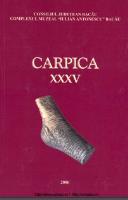
Keywords: Bârlad area; Christian life; beginnings; archaeology; evidence;
L’auteur trate dans cette étude les découvertes archéologiques de facture chrétienne qui se trouve sur le teritoire de la vallée de Bârlad, de Tutova et d’Elan. L’étude met en évidence tant les découvertes archéologiques avec des symboles chrétiennes, mais aussi des églises et des cimètieres de la yone nomée du début de la vie chrétienne jusqu à la fin de l’époque médievale.
More...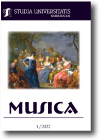
Keywords: Sciarrino; flute; contemporary music; repetition; persistence; musical figures;
Salvatore Sciarrino creates what could be described as an isolated, mysterious “sonic garden”: a ghostly world of sounds where the archetypal corporal processes, such as breathing or heartbeat, are transformed into music. His conceptual thinking – refreshing the musical perception, the ecological hearing, the persistence of repetition, the figures of music (formal archetypes that can be adapted to any kind of art) – as well as his very particular, non-traditional sound make Sciarrino’s music an incredibly rich world to explore. The flute seems to be his favourite instrument, due to its ability to incorporate so many corporeal noises of the performer (from voice to fingertips), becoming almost an extension of his body. The many and ingenious ways of applying repetition in his work, as well as the play with time length – taken to almost unbearable boundaries – make Salvatore Sciarrino one of the true explorers of musical trance today.
More...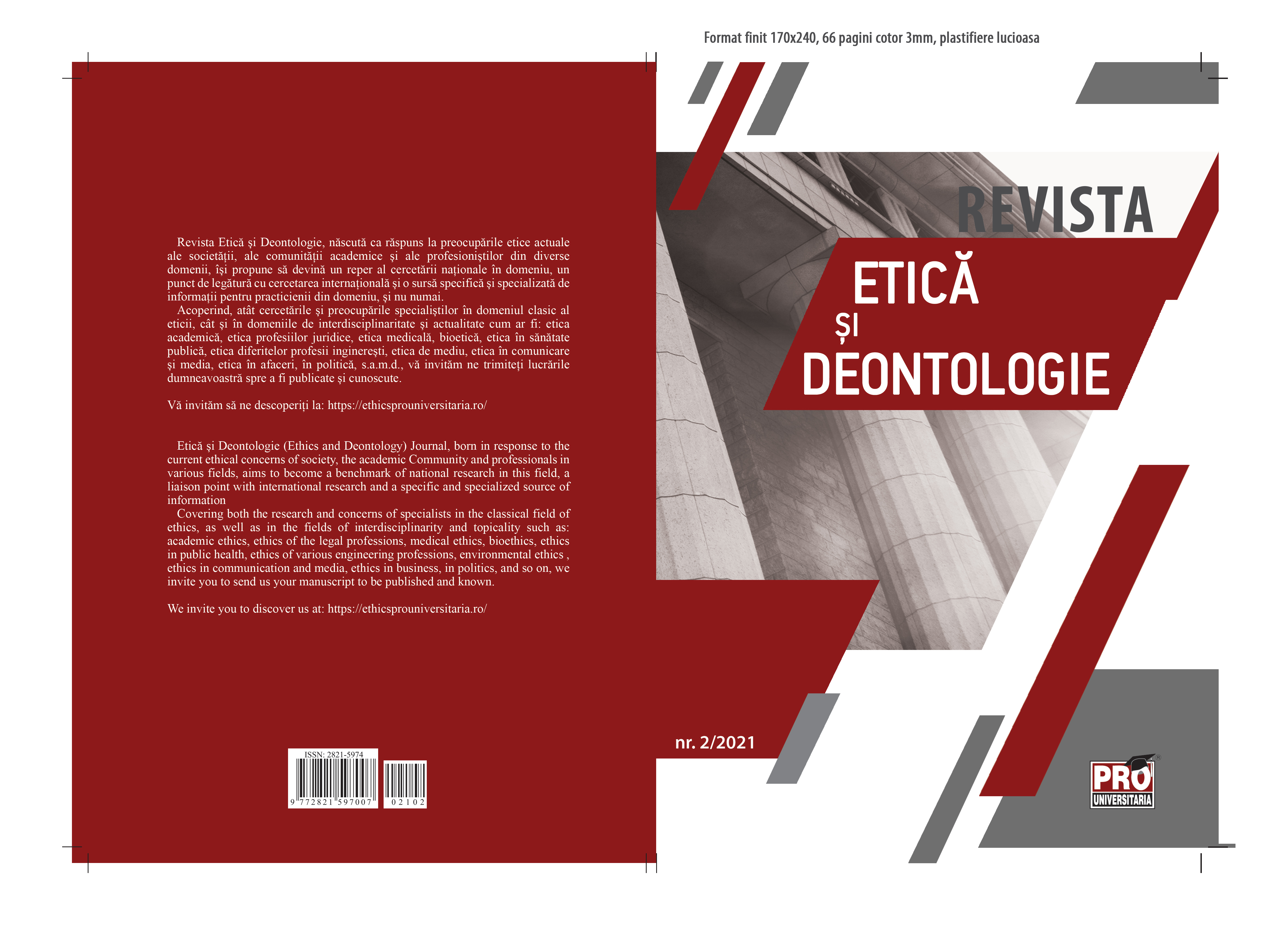
Keywords: university ethics; deontology; doctoral theses;
Pornind de la prevederile Ordinului ME nr. 5.255 din 10 septembrie 2021 privind verificarea respectării eticii și deontologiei universitare în elaborarea tezelor de doctorat din perioada 1990-2016, care impune instituţiilor de învăţământ superior din România care au eliberat diplome de doctor, conform prevederilor legale (în vigoare la momentul emiterii acestora, n.n.), în perioada ianuarie 1990 - iunie 2016 de a: - demara activitatea de verificare a respectării eticii și deontologiei universitare în elaborarea tezelor de doctorat - înfiinţa o structură administrativă distinctă (serviciu/birou) care are atribuţii privind: odigitizarea și verificarea tuturor tezelor dedoctorat, precum șioformarea de formatori în etică și integritate,ne propunem a aduce în discuţie aspecte teoretice rezultate din analiza ordinului din perspectiva respectării eticii și calităţii în învăţământul superior, prin prisma autonomiei universitare.
More...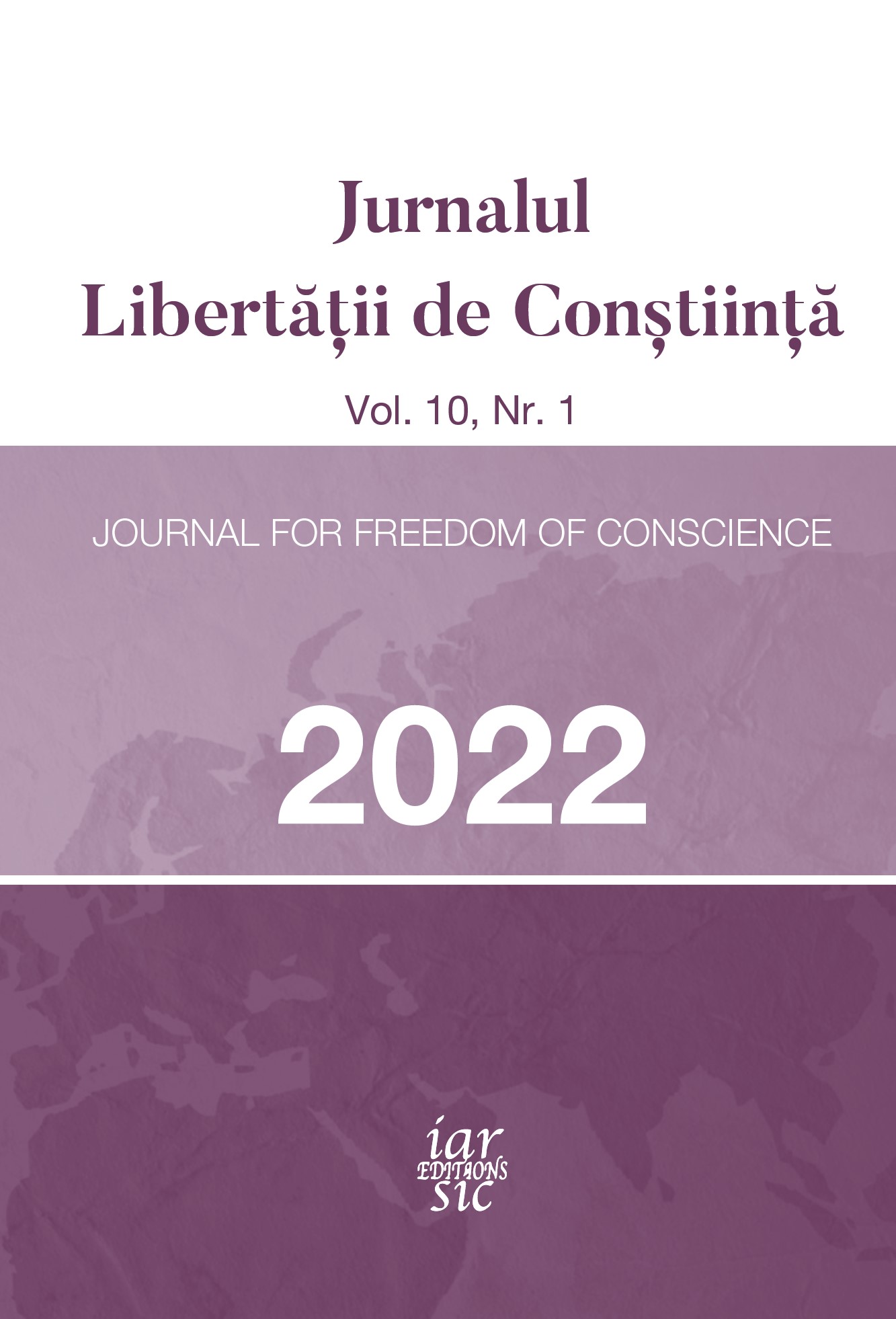
Keywords: freedom; values; rules; moral norms; education; school; family;
The fundamental purpose of moral education in school consists in the formation of the individual as a moral subject, who thinks and acts in the spirit of the requirements and demands of social morality, values, norms and rules. Childhood is the most important period in an individual’s life, it is the starting point for his further development. That is why, from an early age, the child must be given the optimal environment for the formation and development of positive character traits, appropriate and formative social-moral behaviors.
More...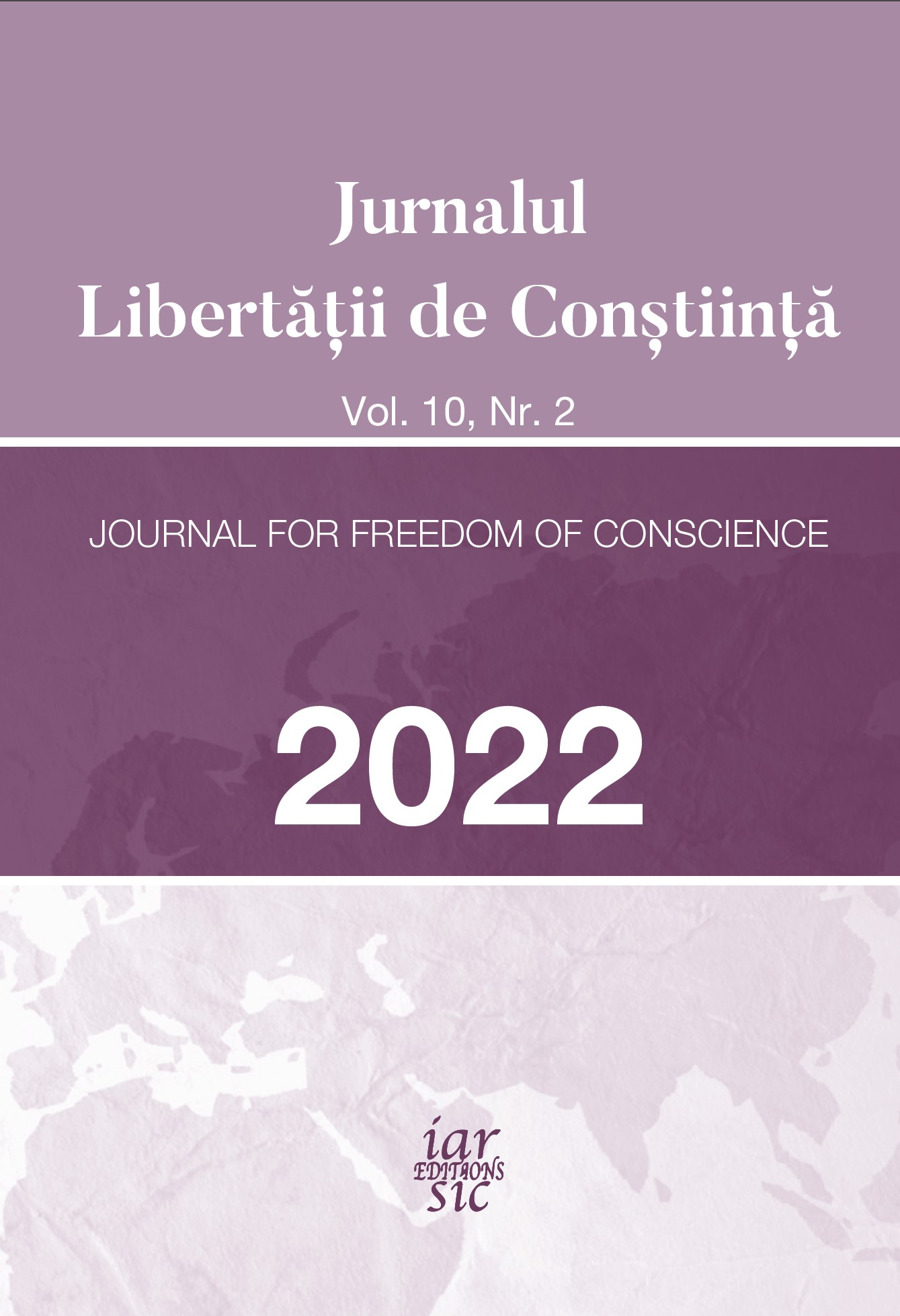
Keywords: moral education; family; faith; school; group of friends; religion;
The essence of moral education consists in creating a suitable framework for the internalization of moral components in the child’s moral personality, in the elaboration and stabilization of the moral profile on this basis in accordance with the requirements of modern society. The fundamental goal of moral education is the formation of man as a moral subject, who can think and act according to the requirements and demands of social morality, the ideal of society, the values, norms and rules that this society claims at a given moment. The moral component of education is a fundamental one, because moral education contributes to the formation and development of conscience, of moral conduct, helping to form later social-moral behavior.
More...
Keywords: Commensality; inter-human relations; human need; liturgical acts; human rights; religious liberty; moral; ethical and social values;
Commensality – the act of sharing a meal together – develops inter-human relations, cements sociability, merges the public with the private and is a manifestation of social solidarity. Liturgical acts: Lord’s Supper, Baptism, Religious Wedding, followed by common meals in which the guests share food together, strengthen and develop moral, ethical and social values. Commensality is the basis of human need for relationship, kindness, integrity, loyalty. Religious liberty – our first freedom – is essential for the entire network of international human rights protection, which serves as a citadel against authoritarianism and violations of individual or collective religious freedoms.
More...Keywords: piano trio; chamber-instrumental ensemble; composers’ creation of the Republic of Moldova;
The chamber-instrumental ensemble is one of the oldest types of instrumental ensembles in music art, having a rich history. It is vividly represented in the composers’ creative work of different epochs, national schools and styles, ranging from European baroque to modern music. Regarding the whole variety of instrumental compositions in chamber music, the piano chamber-instrumental ensemble occupies the first place, thus, one of the most popular genres of chamber instrumental ensemble can be considered the piano trio genre. In the present article, the evolution of Moldovan chamber instrumental music in the context of the formation of the Moldovan school of composition is studied. Also is given a brief review of musicological, methodological and reference literature, to some extent affecting the investigating issues of musical art. The methodological basis of the present article was the works written by the Moldovan musicologists of the Soviet period (A. Abramovici, S. Lobel, L. Axionova, I. Miliutina, E. Cletinici, etc.), works that appeared during the last three decades (E. Mironenco, I. Ciobanu-Suhomlin, S. Ţircunova, N. Cozlova, A. Lapicus, Iu. Mahovici, N. Chiciuc), as well as the works of young scientists who study the performance aspects of the piano trio written by the Moldovan composers (N. Costicova, N. Djalilova).
More...